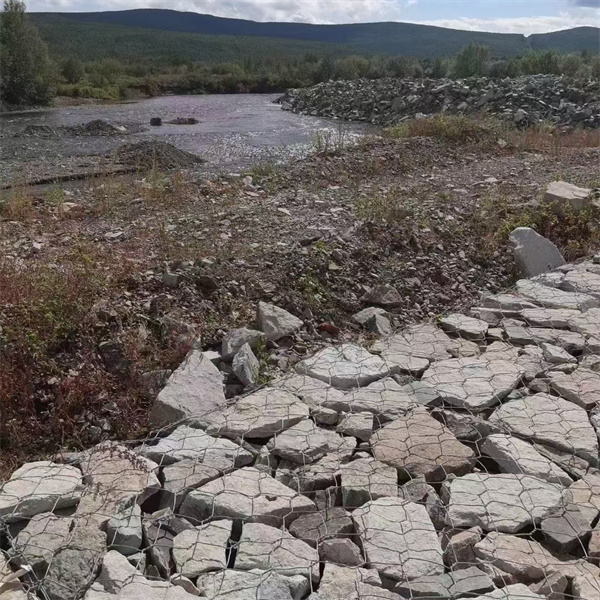کانونی یەکەم . 06, 2024 08:02 Back to list
Optimal Design for Durable Gabion Wall Structures and Their Construction Techniques
The Best Gabion Wall Structure An Overview
Gabion walls have gained significant popularity in the field of civil engineering, landscaping, and erosion control. These structures, made of wire mesh cages filled with stones, gravel, or other materials, offer a versatile and aesthetic solution for various applications. This article examines the best gabion wall structures, considering their design, functionality, and benefits.
Definition and Purpose of Gabion Walls
Gabion walls are primarily used for soil retention, slope stabilization, and erosion control. They are constructed by stacking gabion baskets filled with rocks or stones, creating a sturdy yet flexible barrier. The framework of wire mesh allows the wall to adapt to soil movement and pressure, providing a robust solution for areas prone to erosion or instability.
Key Features of the Best Gabion Walls
1. Material Selection The best gabion walls utilize high-quality materials for both the wire and the fill. Welded wire mesh baskets are often preferred due to their durability and resistance to corrosion. Galvanized steel or PVC-coated wire enhances the lifespan of the structure, making it suitable for various environmental conditions.
2. Design Considerations Effective gabion wall design takes into account the specific site requirements, including soil type, slope grade, and drainage patterns. A well-designed gabion wall should integrate with the natural landscape, enhancing both functionality and aesthetic appeal. The height, width, and configuration of the gabion baskets must be carefully planned to ensure structural integrity.
3. Drainage Solutions Proper drainage is crucial in the construction of gabion walls. They are designed to allow water to flow through the structure, preventing hydrostatic pressure build-up behind the wall. Incorporating drainage pipes or gravel backfill can further enhance the wall’s ability to manage water flow, reducing the risk of erosion or structural failure.
4. Aesthetic Versatility Gabion walls can be designed to suit various aesthetic preferences. The choice of fill material can greatly affect the appearance of the wall. Natural stones, for instance, provide a rugged and organic look, while crushed granite can offer a more refined finish. Additionally, vegetative growth can be encouraged on the top or sides of gabion walls, helping to blend the structure with the surrounding environment.
Installation Process
The installation of a gabion wall involves several steps
1. Site Preparation Clear the area of vegetation and debris. Survey the land to determine the appropriate height and length of the wall.
best gabion wall structure

2. Foundation A stable foundation is essential. It may involve excavating a trench where the wall will sit to ensure even weight distribution.
3. Constructing Gabion Baskets Assemble the wire mesh baskets on-site or purchase pre-manufactured units. Secure the wire mesh to maintain shape and integrity during filling.
5. Stacking and Securing Once filled, the baskets are stacked and secured together. Depending on the height of the wall, additional safety measures, such as connecting wires or additional support structures, may be necessary.
Benefits of Gabion Walls
Gabion walls offer numerous advantages
- Cost-Effective Compared to traditional retaining walls, gabion walls are often more economical due to the use of locally sourced materials and straightforward installation methods.
- Sustainability Gabions are environmentally friendly, as they can be constructed using natural materials and can promote biodiversity by allowing vegetation to grow.
- Resistance to Weathering The stone-filled cages tend to be resistant to erosion, making gabion walls ideal for use in areas subject to harsh weather conditions.
- Flexibility and Adaptability Gabion walls can be easily modified or expanded as site conditions change, providing long-term solutions for land management.
Conclusion
The best gabion wall structures combine quality materials, thoughtful design, and sustainable practices to create effective solutions for erosion control and land stabilization. Their versatility, cost-effectiveness, and aesthetic potential make them an ideal choice in various applications, from landscaping to civil engineering. As the importance of sustainable practices in construction increases, gabion walls will likely remain a popular and effective solution for managing and enhancing our natural environments.
-
HESCO Gabion Baskets for Coastal Erosion Prevention
NewsAug.22,2025
-
Longevity and Durability of River Rock Gabion Walls
NewsAug.22,2025
-
How to Integrate Gabion 3D Walls in Urban Planning
NewsAug.22,2025
-
Reno Mattress Gabion Applications in Civil Engineering
NewsAug.22,2025
-
How to Install Wire Mesh for Gabion Baskets Properly
NewsAug.22,2025
-
Best Materials for Filling a Chain Link Gabion
NewsAug.22,2025
-
Wire Mesh Thickness Impact on Gabion Wall Load Bearing
NewsAug.12,2025






